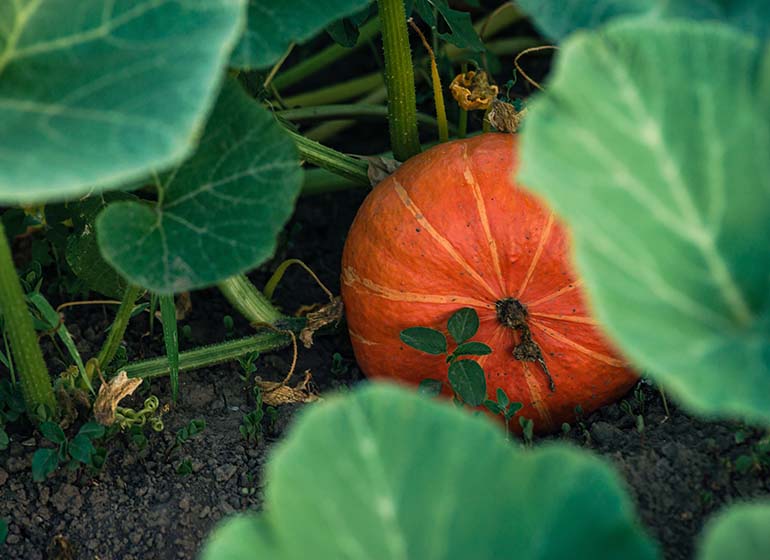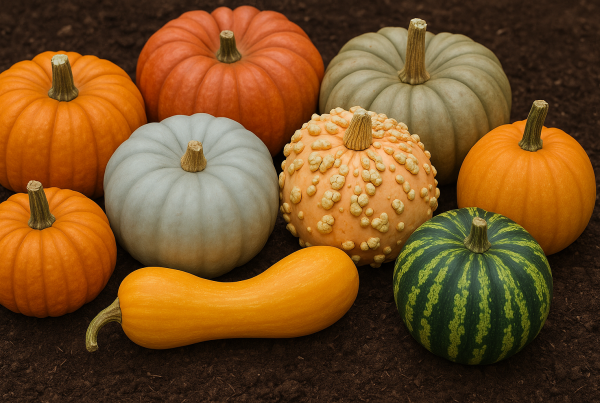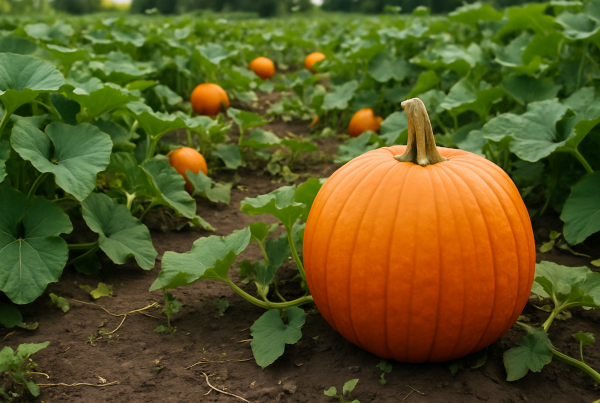Growing tulips is a rewarding experience that brings vibrant colours and delicate beauty to any garden. While tulips are relatively easy to cultivate, understanding the key steps in planting and care will ensure that your tulips bloom to their full potential. Whether you’re a beginner or an experienced gardener, this guide will walk you through the process from bulb selection to seasonal maintenance.
Your Guide to Growing Pumpkins
Follow our step-by-step guide to grow healthy and vibrant pumpkins right in your garden.
The Essentials of Growing Perfect Pumpkin

1. Planning Your Pumpkin Patch:
- Choosing the Right Variety: Start by selecting a pumpkin variety that suits your needs. Whether it’s a large Jack-o’-Lantern for Halloween or a smaller Sugar Pie for baking, the choice of variety will influence your growing process.
- Location: Pumpkins require a sunny spot with well-drained soil. Ensure your garden bed receives at least 6-8 hours of sunlight daily.
- Soil Preparation: Pumpkins thrive in rich, fertile soil. Prepare your planting area by digging in plenty of organic matter, such as compost or well-rotted manure, to improve soil fertility and drainage.

2. Planting Your Pumpkins:
- When to Plant: In the UK, it’s best to start pumpkin seeds indoors in late April to early May. This gives the plants a head start before being transplanted outdoors after the last frost, usually in late May or early June.
- Starting Seeds: Sow seeds in small pots about 1 inch deep. Keep them in a warm, sunny location, and water regularly. Once the seedlings have a few leaves and the risk of frost has passed, they can be transplanted outside.
- Spacing: Pumpkins need plenty of space to grow. Space your plants about 2-3 feet apart in rows that are 6-8 feet apart. This allows room for the vines to spread out and for the pumpkins to develop.
3. Caring for Your Pumpkins:
- Watering: Pumpkins require consistent moisture, especially during the flowering and fruiting stages. Water deeply once or twice a week, making sure the water reaches the roots. Avoid overhead watering to prevent fungal diseases.
- Feeding: Once the plants start to flower, feed them with a high-potassium fertilizer every 2-3 weeks to encourage healthy fruit development. Liquid seaweed or comfrey tea are good organic options.
- Supporting Growth: As the vines grow, gently guide them in the desired direction. Mulching around the plants helps retain soil moisture and suppress weeds.
4. Dealing with Common Problems:
- Pests: Watch out for common pests like slugs, snails, and aphids. Use organic methods like hand-picking, copper tape, or natural predators to keep them under control.
- Diseases: Powdery mildew can affect pumpkin plants, especially in damp conditions. Ensure good air circulation by spacing plants adequately and watering at the base. If necessary, treat with an organic fungicide.
- Weather Challenges: In cooler or wetter climates, consider covering your plants with fleece or cloches to protect them from unexpected frosts or heavy rain.
5. Harvesting Your Pumpkins:
- When to Harvest: Pumpkins are usually ready to harvest in late September to October, just in time for Halloween. They’re ripe when the skin is hard and the stem starts to dry out.
- How to Harvest: Cut the pumpkin from the vine using sharp shears, leaving a few inches of stem attached. Handle pumpkins carefully to avoid bruising.
- Curing: After harvesting, cure your pumpkins by leaving them in a warm, dry place for 10-14 days. This hardens the skin, allowing them to last longer in storage.
6. Storing Your Pumpkins:
- Storage Conditions: Store pumpkins in a cool, dry, and well-ventilated area. Properly cured pumpkins can last for several months, making them perfect for use throughout autumn and winter.
- Tips: Check stored pumpkins regularly and remove any that show signs of decay to prevent it from spreading to others.

Growing Pumpkins FAQs
Common Questions and Expert Answers for Successful Pumpkin Cultivation
When is the best time to plant pumpkins
The best time to plant pumpkin seeds is in late April to early May, starting them indoors. Transplant them outdoors after the last frost, usually in late May or early June.
How much space do pumpkin plants need to grow?
Pumpkin plants need plenty of space to spread out. Space your plants about 2-3 feet apart in rows that are 6-8 feet apart to allow room for the vines to grow and for the pumpkins to develop properly.
What type of soil is best for growing pumpkins?
Pumpkins thrive in rich, well-drained soil that is high in organic matter. Preparing your soil with plenty of compost or well-rotted manure will improve fertility and drainage, helping your pumpkins grow strong and healthy.
How often should I water my pumpkin plants?
Pumpkins need consistent moisture, especially during flowering and fruiting. Water deeply once or twice a week, ensuring that the water reaches the roots. Avoid overhead watering to reduce the risk of fungal diseases.

Pumpkin Patter: All Things Pumpkin, All Year Round!




